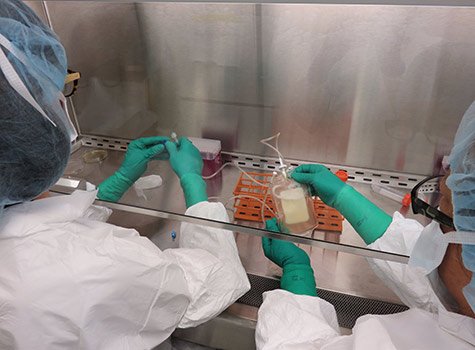The researchers also performed an in-depth, multi-dimensional analysis on the yeast strain, and confirmed that the phenotype of the synthetic yeast strain is consistent to that of the wild-type. The BGI research team, as one of the Chinese participant, has led the completed redesign and synthesis of the chromosome II which is 770 kilobase pair long, and transformed it into a yeast cell resulting in a synthetic strain that is consistent to the wildtype one in terms of viability. The whole study is published as the cover story on the March 9th special issue of Science.
Following breakthrough work with the synthesis of the Mycoplasma genome in 2010, the Sc2.0 project is another remarkable project in synthetic genomics research. The Sc2.0 project is formed by a consortium of a dozen leading yeast laboratories from the USA, UK, China, France, Singapore and Australia, and has set itself the ambitious task of producing the first synthetic yeast genome (16 chromosomes ~14 Mbp) by 2018. With support from the National High Technology Research and Development Program («863» Program), Chinese scientists have made a key contribution to the project and come from three leading domestic Chinese institutions; BGI, Tianjin University and Tsinghua University. The initiator and leader of the Sc2.0 project, Prof. Jef D. Boeke, stated: «Working with our Chinese colleagues at BGI, Tianjin and Tsinghua, has been transformational for the Sc2.0 project. The resources that can be bought to bear on this vast and complex project in terms of grant support, state of the art facilities and most of all, human capital in the form of some of the most innovative scientists in Sc2.0, are simply amazing.»
BGI, as a member of the Chinese team, has led the complete redesign and synthesis of chromosome II (770 Kb in length). The resulting strain shows a viability that is highly similar to the wild type strain. The BGI team applied a «Trans-Omics» approach in order to identify the genotype-phenotype correlation of the synthetic yeast strain at the phenotypic, genomic, transcriptomic, proteomic and metabolomic level. Yue Shen, the first author of the synII paper and the director of the Genome Synthesis and Editing Platform at the China National GeneBank said: «The Sc2.0 project not only promotes the rapid development of the technology, but also provides us with the opportunity to collaborate with international leading teams to learn and master genome synthesis technology together. We now have a more thorough understanding of the model organism yeast, which will help us to explore its potentials in industrial applications.»
The team also collaborated with the University of Edinburgh on testing physiological function including cell replication and division. Results indicate that the artificial S. cerevisiae genome is highly modifiable, and has high flexibility for DNA element addition and deletion. This success in reengineering the eukaryotic S. cerevisiae genome is another milestone on the way towards creating synthetic life, after the completion of the synthetic prokaryotic genome. Co-corresponding author of the synII paper and leader of the University of Edinburgh team, Dr Yizhi Cai, agreed: «This is a major milestone in synthetic biology and biotechnology. It really shows our excellence in engineering biology at the chromosome level, and it would not be possible without the great collaborations between our Sc2.0 international teams. I look forward to continuing working with this amazing team to complete the entire synthetic yeast genome in the years to come.»
In 2014, the first of 16 chromosomes were synthesized (synIII) thereby marking an important first step. The next step required an international mission to collaboratively synthesize the other 15 chromosomes that are needed to generate the first fully synthetic yeast genome. This international Sc2.0 Project has just hit a significant milestone. The Sc2.0 team of collaborating scientists believes that, by reengineering the S. cerevisiae genome, they can gain a deeper understanding of the biological mechanisms and responses of organisms, and their adaptability to and evolutionary process in various environments. They hope that the outcome of the Sc2.0 project will help the world to solve grand challenges relating to health, food, energy and the environment.
Apparently, this breakthrough is a great inspiration to the international teams. It once again demonstrates the strength of international collaboration in mega science project: integration of resource and specialty which facilitates the completion of missions impossible. Just as the corresponding author of synII paper, co-founder and Chairman of BGI, Prof. Huanming Yang concluded: «Breakthroughs made in this project in recent years shows the importance of international collaboration in science. This international project provides our young team with a great and unique chance to improve and acquire the vision on the development of this field and the spirit of international collaboration.»
